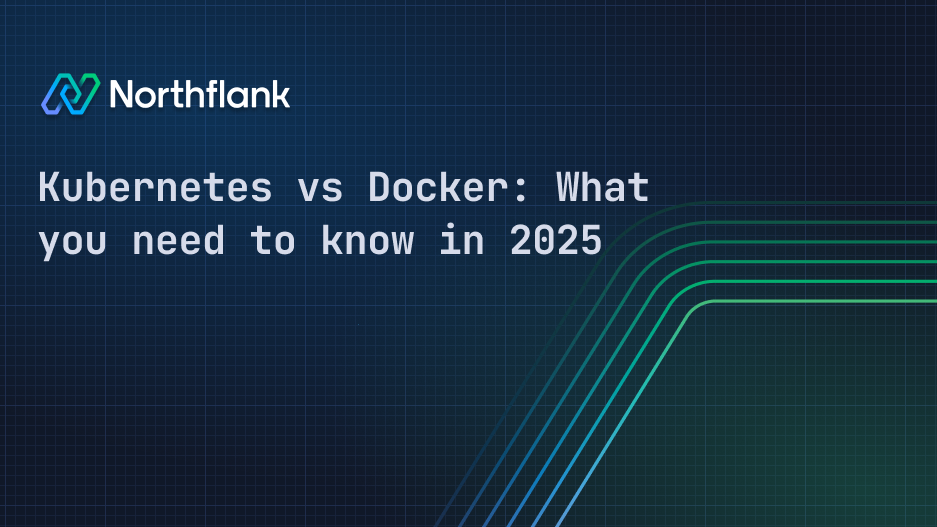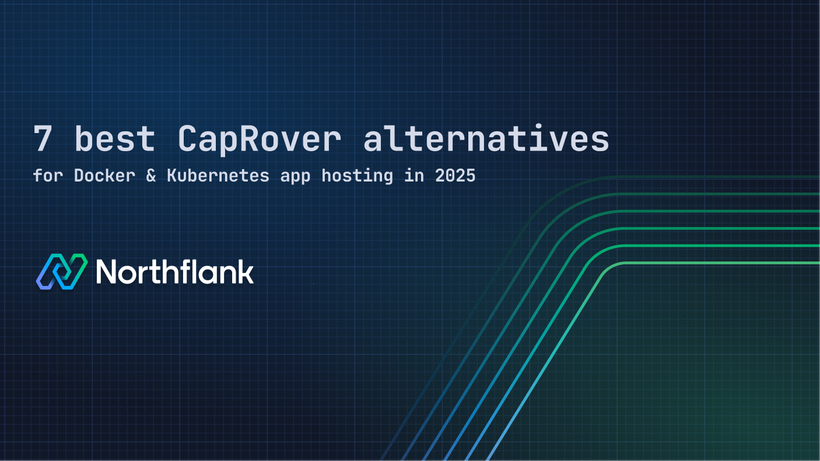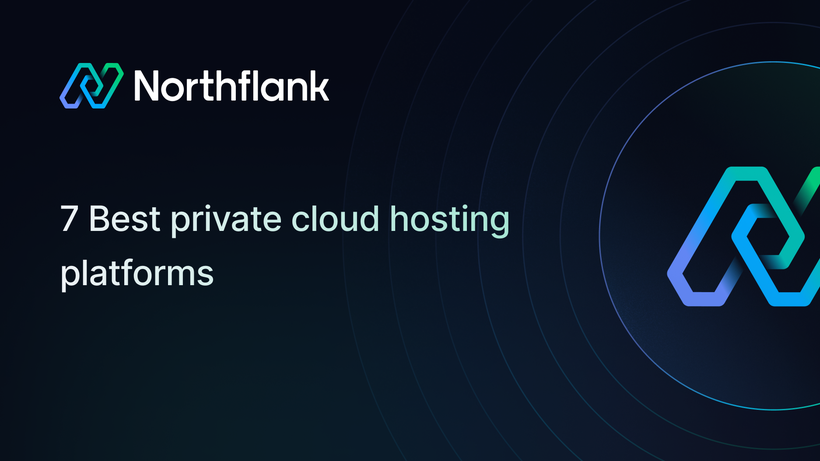

Kubernetes vs Docker: What you need to know in 2025
Imagine spinning up a web service in seconds, scaling it effortlessly, and pushing updates with confidence, all without ever touching a physical server. That is the magic of modern cloud native development. And at the center of it all are two names that every developer knows: Docker and Kubernetes.
But for all the conversations and comparisons, many still wonder: Are Docker and Kubernetes competitors? Are they alternatives or two pieces of the same puzzle? Which one should I use for my next project?
Whether you are a solo developer shipping your first microservice or part of a platform team managing hundreds of workloads, understanding the relationship between Docker and Kubernetes is key to making smarter architecture decisions.
Let’s break it down with clarity, real-world context, and a developer-focused lens.
If you are short on time or just want the high-level summary, here is a quick side-by-side comparison of what Docker and Kubernetes do, where they shine, and how they fit into your workflow.
| Feature | Docker | Kubernetes |
|---|---|---|
| What it is | Containerization engine | Container orchestration platform |
| Primary use | Creating and running containers | Managing and scaling containers |
| Complexity | Low | Higher |
| Learning curve | Easy to get started | Steeper learning curve |
| Standalone capability | Yes | No (needs containers to orchestrate) |
| Ideal for | Local development and small apps | Distributed systems and production workloads |
| Popularity in CI/CD | Very high | Very high |
| Requires Docker? | Not necessarily (can use containerd) | No (can use any OCI compliant container runtime) |
| Works well together? | Yes | Yes |
| Simplified by Northflank? | Yes | Yes |
Docker is a tool that makes it easier to create, deploy, and run applications using containers. A container is a lightweight, portable, and self-sufficient unit that includes everything needed to run a piece of software, from the code and libraries to system tools and settings.
At its core, Docker solves a problem that has plagued developers for years: “It works on my machine.” With Docker, developers can package applications in a way that guarantees they will run the same, no matter where they are deployed — on your laptop, on a testing server, or in the cloud.

Docker revolutionized how developers build and ship applications. It replaced bulky virtual machines with fast, consistent containers. It is intuitive to use, has an incredible developer experience, and has become the standard for containerization.
But while Docker makes building and running containers easy, it was never designed to manage them at scale across multiple machines. And that is where Kubernetes enters the picture.
Kubernetes, often abbreviated as K8s, is a powerful system for managing containerized applications across a cluster of machines. Originally developed by Google, Kubernetes is now an open-source project maintained by the Cloud Native Computing Foundation.
Kubernetes is not about creating containers — it is about running and scaling them efficiently in production. Imagine you are running dozens of containers across multiple servers. You want to make sure they stay online, can talk to each other, can scale up when traffic spikes, and heal themselves when something breaks. Kubernetes handles all of that and more.
At a high level, Kubernetes provides:
- Scheduling: Places containers on the right nodes
- Load balancing: Routes traffic to the correct services
- Scaling: Adds or removes containers automatically
- Self-healing: Restarts failed containers and maintains the desired state
- Service discovery: Let containers find each other dynamically
- Rollouts: Handles rolling updates and rollbacks

Kubernetes is incredibly powerful but also more complex than Docker alone. That’s because it wasn’t built to be easy — it was built to be flexible. Kubernetes isn’t a developer platform; it’s a platform for building platforms. It gives teams the primitives to run distributed systems, but leaves a lot of the developer experience up to you. Tools like Northflank step in to absorb that complexity and make Kubernetes actually usable, especially for teams that want the power without the overhead.
"Kubernetes can feel overwhelming at first, but it doesn’t have to take years to get decent at it if you’re motivated and stick with it." — Reddit user source
The biggest confusion arises because Docker and Kubernetes are often mentioned together, but they solve different problems.
Docker is about packaging and running containers. It is the tool that developers use to create a container image and run it locally.
Kubernetes is about managing and orchestrating those containers. It does not build images. It schedules and manages them in a production environment.
Think of Docker as the engine that builds and starts the car. Kubernetes is the highway system that coordinates where all the cars go, how they interact, how they scale, and what happens when one breaks down.
"You use Docker to build the containers, and you use Kubernetes to run them." — Reddit user source
Also worth noting: Kubernetes does not actually require Docker to run containers. Under the hood, Kubernetes uses a container runtime like containerd or CRI-O. Docker used to be the default, but Kubernetes moved away from that in favor of lighter runtimes.
Still, Docker and Kubernetes work very well together, especially in development and CI/CD pipelines.
Docker is used by:
- Developers building applications locally
- CI/CD pipelines that need to package apps into containers
- Teams running small services or apps on a single machine or VM
- Anyone who wants portability and consistency across environments
Kubernetes is used by:
- Enterprises managing large-scale container deployments
- Teams with distributed microservice architectures
- Cloud providers offering managed container platforms (like GKE, AKS, EKS)
- DevOps teams needing resilience, autoscaling, and rolling deployments
In practice, Docker is often used in tandem with Kubernetes. A common workflow looks like:
- Developer builds a Docker image locally
- The image is pushed to a container registry
- Kubernetes pulls the image and runs it in production
While Docker and Kubernetes often work hand in hand, they serve very different roles in the container ecosystem. Docker is the engine that builds and runs containers, while Kubernetes is the system that manages and orchestrates them at scale. If Docker is the container ship, Kubernetes is the global port logistics network keeping every ship on schedule, rerouted, and operational.
"Docker and Kubernetes are not mutually exclusive. Docker is used to build and run containers. Kubernetes is used to orchestrate them." — Reddit user source
Here is a quick comparison to highlight the key distinctions:
| Category | Docker | Kubernetes |
|---|---|---|
| Purpose | Build and run containers | Orchestrate and manage container workloads |
| Primary Use Case | Local development, packaging, CI/CD | Production deployment, scaling, cluster management |
| Scope | Single container or host | Multi container, multi host environments |
| Installation | Lightweight, quick setup | Complex, often requires managed service |
| Scaling | Manual | Automatic, based on demand |
| Networking | Basic bridge networks | Advanced service discovery and pod networking |
| Load Balancing | External tools needed | Built in service load balancing |
| Resilience | Manual restart needed | Self healing and automatic restarts |
| Declarative Config | Limited (Docker Compose) | Fully declarative YAML configurations |
| Tooling | CLI focused (Docker CLI, Docker Compose) | Declarative and API driven (kubectl, Helm) |
This breakdown helps illustrate why both tools are often used together — Docker for building and shipping containers, Kubernetes for running and scaling them across your infrastructure.
If you are just getting started, Docker is your best friend. It is easier to learn, has great tooling, and fits perfectly into development workflows.
Use Docker when:
- You are building and testing apps locally
- You need consistent environments across teams
- You are running a small app or side project
- You want fast feedback loops and minimal overhead
Use Kubernetes when:
- You are managing multiple services across machines
- You need automatic scaling, failover, and self-healing
- You are deploying to production at scale
- You want advanced orchestration features like blue-green deployments or canary rollouts
There is no need to choose one over the other entirely. Most modern teams use both Docker for local development and CI, and Kubernetes for production deployment and orchestration.
Here are some guiding questions to help you decide what fits your needs:
-
Are you deploying something simple or complex?
For simple apps or internal tools, Docker alone might be enough. For complex distributed systems, Kubernetes is a better fit.
-
Do you need to scale automatically?
If autoscaling is important, Kubernetes is your friend.
-
Are you comfortable with infrastructure?
Kubernetes has a steeper learning curve. If you prefer to stay focused on code, you might want to start with Docker or use a platform that abstracts Kubernetes.
-
What are your team’s DevOps skills?
If you have strong platform engineering capabilities, Kubernetes offers massive power. If not, a simpler toolchain might serve you better.
-
Are you using a managed platform?
Services like Northflank or AWS Fargate can hide much of the complexity, making Kubernetes approachable even for smaller teams.
Kubernetes is here to stay. It is powerful, flexible, and production-proven, but it can also be complex, especially for teams that just want to build and ship fast. Docker makes containers accessible, but it does not handle orchestration or high availability on its own.
That is where Northflank comes in.
Northflank brings together the best of Docker and Kubernetes into a single, streamlined developer platform. It lets you build, deploy, and scale your applications with the power of Kubernetes under the hood, without the operational overhead.
Here is what Northflank handles for you:
| Feature | Without Northflank | With Northflank |
|---|---|---|
| Kubernetes setup | Manual cluster provisioning and YAML files | Fully managed infrastructure, no setup needed |
| Docker container builds | Handled separately in CI or local dev | Integrated Docker builds from your repo |
| Deployments | kubectl or CI scripts required | Git-based auto deployments with preview builds |
| Scaling and autoscaling | Requires metrics and configuration | Simple UI or API toggle, autoscaling built in |
| Health checks | Custom config in Kubernetes YAML | Built in health checks and service monitoring |
| CI/CD pipelines | Separate tooling like Jenkins or GitHub Actions | Built in pipelines with logs and history |
| High availability | Requires custom setup | Comes with multi-zone redundancy out of the box |
| Observability | Set up with Prometheus, Grafana, etc. | Real time logs, metrics, and service dashboards |
Northflank is designed to remove the barriers between development and deployment. You can work with your favorite tools — Dockerfiles, Git repos, container registries — and let Northflank handle the orchestration layer automatically.
Whether you are a startup shipping fast or an enterprise modernizing your stack, Northflank helps your team stay focused on what matters most: building great software.
See how Weights company uses Northflank to scale to millions of users without a DevOps team

Docker and Kubernetes aren’t competitors. They’re complementary tools in the cloud native toolbox.
Docker helps you build containers. Kubernetes helps you run them at scale. Together, they power some of the most reliable systems on the internet today.
The key isn’t choosing between them — it’s knowing how they work together, and how to use that power without slowing yourself down.
And if managing Kubernetes still feels heavy or frustrating, Northflank is here to change that. It gives you the best of both worlds: the simplicity of Docker, the power of Kubernetes, minus the ops overhead.
No YAML walls. No cluster wrangling. Just clean deployments, built-in CI/CD, and infra that scales with you.
Try Northflank today and see what cloud native feels like when it just works.


